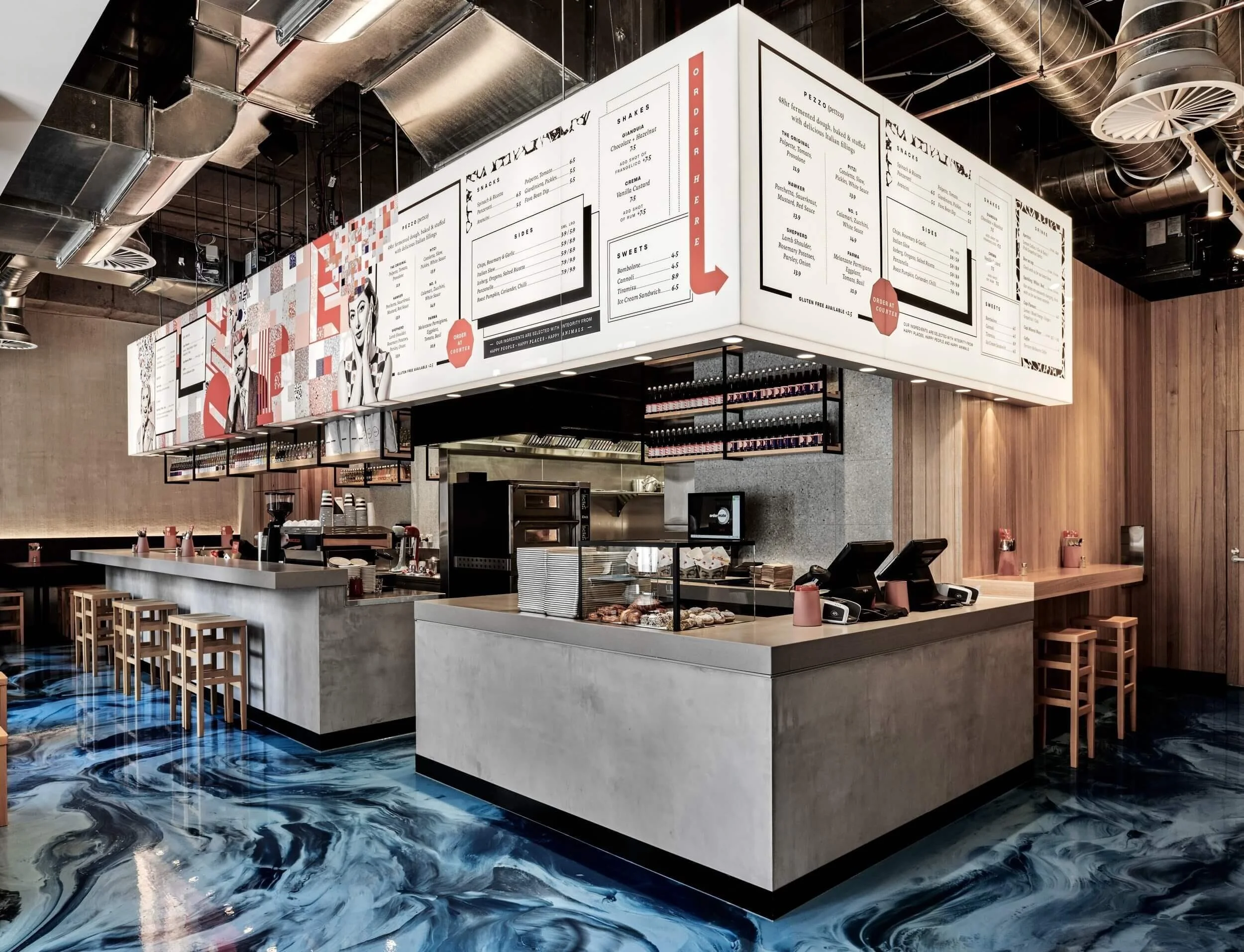Why You Should Add A Splash of X-Bond to Your Joinery
Even though we’ve been installing it for almost three decades, the versatility of X-Bond never stops to amaze us! One of the most flexible applications for microcement is joinery, whether it be on a custom countertop, textured cabinet faces, or interesting retail displays. The properties of X-Bond allows you to achieve the look of a concrete surface but at a minimal depth and weight — applied by hand at only 2-3mm thick. This means you can have a sleek, seamless joinery application with a tactile concrete-look finish. Discover the concrete textures we have in our range.
Why microcement joinery?
Microcement joinery offers a unique way to create seamless, sculptural elements within a space — whether it’s commercial or residential. Unlike traditional materials, microcement can be applied directly over cabinetry, vanities, or shelving, wrapping the entire unit in a sleek, continuous finish with no visible joins. The result is a modern, minimalist aesthetic that feels both bespoke and durable.
This finish is also highly practical: microcement is resistant to stains, moisture, and everyday wear, making it ideal for high-use areas. It gives you the creative flexibility to design joinery that feels integrated with the overall interior concept, without compromising on function.
What substrates can be used for joinery?
Internally, you can construct new joinery pieces from MDF and then surface them with X-Bond. Existing laminate can also be resurfaced with microcement. For external joinery applications which are undercover, X-Bond can be applied over Marine Ply. For external joinery applications exposed to elements, X-Bond should be applied over Compressed Sheeting.






